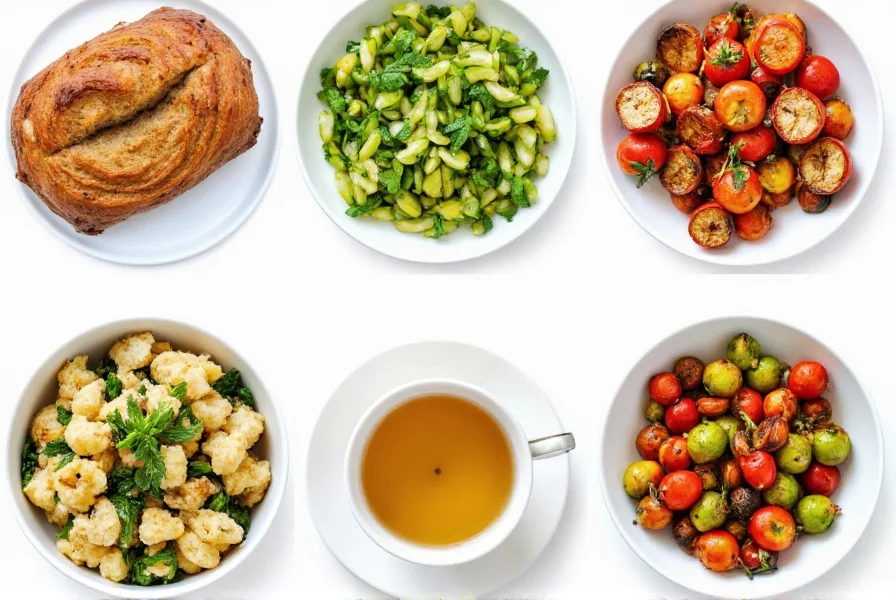Fennel seeds (Foeniculum vulgare) transform ordinary dishes with their complex anise-like flavor profile. Unlike fresh fennel bulb, these tiny seeds pack concentrated flavor that withstands cooking processes, making them indispensable in spice blends worldwide. When properly toasted and incorporated, fennel seeds enhance everything from rustic Italian sausages to delicate Indian flatbreads without overpowering other ingredients.
Understanding Fennel Seeds: Flavor and Applications
Fennel seeds contain anethole, the same compound found in anise and star anise, but with a more nuanced, earthy sweetness. Their flavor profile works exceptionally well in:
- Meat rubs (particularly pork, lamb, and duck)
- Vegetable roasts (especially carrots, beets, and squash)
- Bread doughs and crackers
- Curry powders and garam masala variations
- Digestive teas and post-meal tonics
Unlike fresh fennel, dried seeds maintain potency for 2-3 years when stored in airtight containers away from light. For maximum flavor, lightly toast whole seeds in a dry skillet for 1-2 minutes before grinding or using whole.
Essential Preparation Techniques
How you prepare fennel seeds dramatically affects their culinary impact:
| Preparation Method | Best For | Flavor Impact |
|---|---|---|
| Whole, untoasted | Infusions, pickling brines | Mild, background note |
| Lightly toasted whole | Breads, roasted vegetables | Warm, nutty complexity |
| Finely ground | Spice blends, meat rubs | Intense, immediate flavor |
| Dry roasted and crushed | Indian curries, lentil dishes | Balanced aromatic presence |
Classic Fennel Seed Recipes Worth Mastering
1. Rustic Italian Sausage and Vegetable Skillet
This traditional preparation showcases fennel seeds' natural affinity with pork. The seeds' oils bloom when sautéed with meat, creating a flavor foundation for the entire dish.

Ingredients:
- 1 lb Italian sausage (mild or hot)
- 2 tbsp olive oil
- 1.5 tsp whole fennel seeds (toasted)
- 3 cloves garlic, minced
- 4 cups seasonal vegetables (zucchini, bell peppers, onions)
- 1/2 cup chicken broth
- Fresh parsley for garnish
Method: Brown sausage in olive oil, removing excess fat. Add toasted fennel seeds and garlic, cooking until fragrant (30 seconds). Add vegetables and broth, cover and simmer 15-20 minutes until vegetables are tender-crisp. Garnish with parsley.
2. No-Knead Fennel Seed Bread
This artisan-style bread requires minimal effort but delivers professional results. The fennel seeds create delightful crunch and flavor pockets throughout the crumb.
Ingredients:
- 3 cups bread flour
- 1.5 tsp salt
- 1/2 tsp instant yeast
- 1.5 cups lukewarm water
- 1.5 tbsp fennel seeds (toasted and slightly crushed)
Method: Mix flour, salt, yeast and fennel seeds. Add water and stir until shaggy dough forms. Cover and rest at room temperature 12-18 hours. Preheat Dutch oven at 450°F for 30 minutes. Shape dough, place in preheated pot, bake covered 30 minutes, then uncovered 15 minutes.
3. Digestive Fennel Seed Tea
A traditional post-meal digestive that's simple to prepare and remarkably effective for settling the stomach.
Ingredients:
- 1 cup boiling water
- 1 tsp fennel seeds (lightly crushed)
- Optional: thin slice of fresh ginger or lemon wedge
Method: Place crushed fennel seeds in teapot or mug. Pour boiling water over seeds. Steep covered for 8-10 minutes. Strain and serve. Add ginger for extra digestive benefits or lemon for brightness.
Regional Fennel Seed Traditions
Fennel seeds appear in distinctive ways across global cuisines:
- Indian cuisine: Integral to panch phoron (five-spice blend) and many curry preparations. Try adding 1/2 tsp to dal recipes for authentic flavor.
- Mediterranean cooking: Essential in Italian sausage and Greek fish preparations. Combine with oregano and lemon zest for seafood rubs.
- Middle Eastern dishes: Features in baharat spice mixtures. Excellent with lamb and eggplant dishes.
- Eastern European traditions: Used in some rye bread variations and cabbage dishes.
Smart Substitutions and Pairings
When fennel seeds aren't available, consider these alternatives:
- Dill seeds (for similar earthy notes, though less sweet)
- Anise seeds (stronger licorice flavor, use 2/3 the amount)
- Fennel pollen (more expensive but intensely flavorful)
Fennel seeds pair exceptionally well with:
- Citrus (lemon, orange zest)
- Garlic and onions
- Tomatoes
- Olives
- Fennel bulb (using both parts creates layered flavor)
Nutritional Benefits of Fennel Seeds
Beyond flavor, fennel seeds offer documented digestive benefits. They contain compounds that relax gastrointestinal muscles and reduce bloating. Just one tablespoon provides:
- Iron (11% of daily value)
- Manganese (15% of daily value)
- Fiber (3 grams)
- Antioxidants including rosmarinic acid
Traditional medicine systems have used fennel seeds for centuries to support digestion and respiratory health. Modern research confirms their carminative properties that help reduce gas and bloating.
Troubleshooting Common Fennel Seed Issues
Problem: Bitter flavor in finished dish
Solution: You likely over-toasted the seeds. Toast only until fragrant (1-2 minutes max) and remove from heat immediately.
Problem: Seeds remain hard in baked goods
Solution: Lightly crush seeds before incorporating into doughs or batters to ensure even distribution and texture.
Problem: Flavor gets lost in complex dishes
Solution: Add half the seeds early in cooking for base flavor, and the remaining half near the end for brighter top notes.

Frequently Asked Questions
Can I use fennel seeds instead of anise seeds in recipes?
Yes, but with adjustments. Fennel seeds have a milder, earthier flavor than anise seeds. Use 25% more fennel seeds when substituting for anise, and consider adding a small pinch of sugar to compensate for the sweeter profile of anise.
How do I properly store fennel seeds to maintain freshness?
Store whole fennel seeds in an airtight container away from light and heat. Properly stored, they maintain peak flavor for 2-3 years. Avoid refrigeration as moisture can degrade quality. For longest shelf life, keep in a dark cupboard at room temperature.
What's the difference between fennel seeds and caraway seeds?
While similar in appearance, fennel seeds are straighter and lighter green with a sweeter, anise-like flavor. Caraway seeds are more curved with a sharper, earthier taste. They're not direct substitutes as their flavor profiles differ significantly, though both work well in rye breads.
Can I grind fennel seeds ahead of time for recipes?
For best flavor, grind fennel seeds immediately before use. Pre-ground seeds lose volatile oils quickly, diminishing their aromatic qualities within hours. If you must prepare in advance, store ground fennel in an airtight container in the freezer for up to one week.











 浙公网安备
33010002000092号
浙公网安备
33010002000092号 浙B2-20120091-4
浙B2-20120091-4